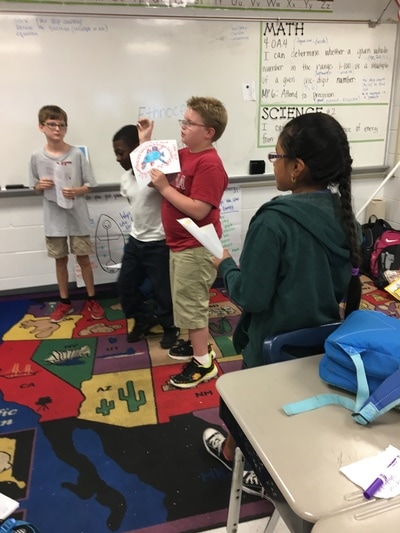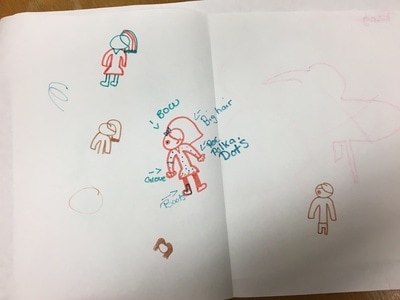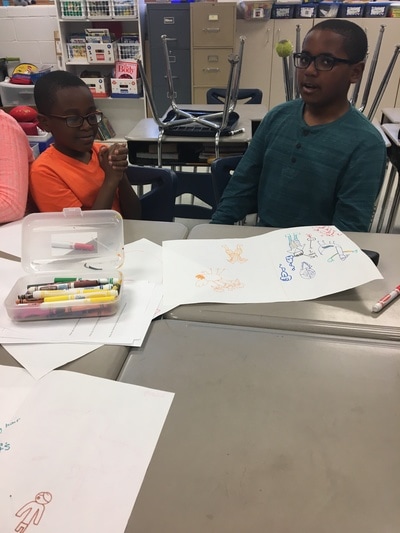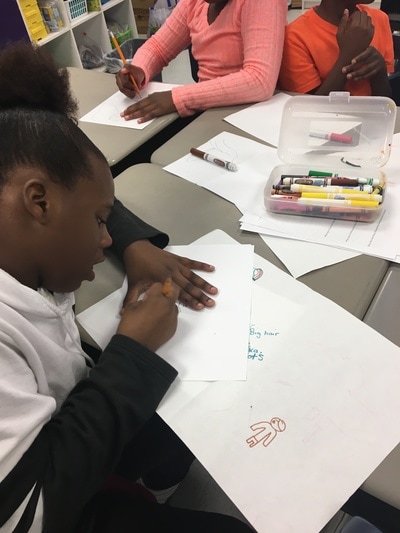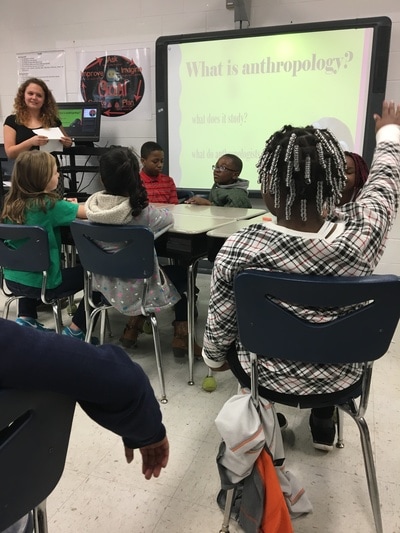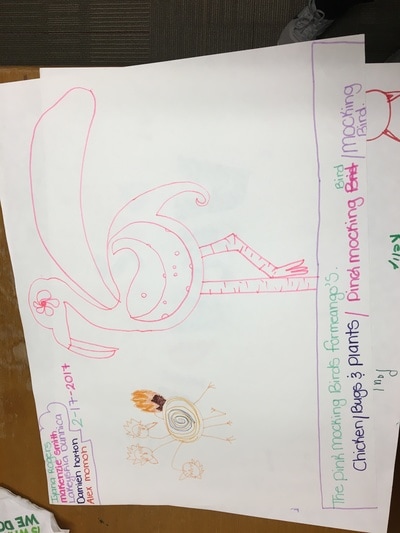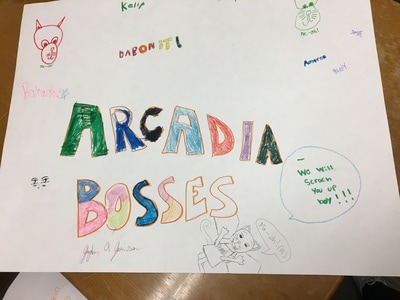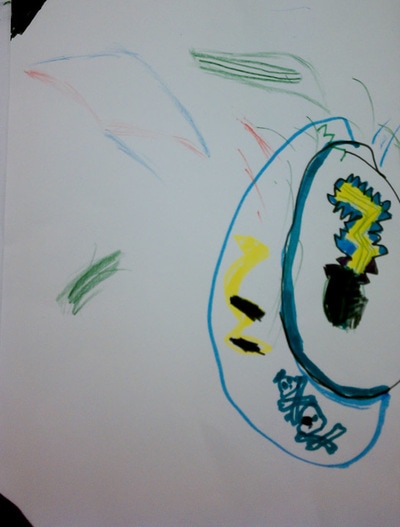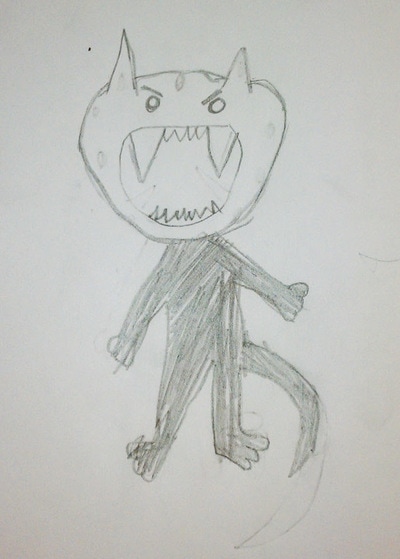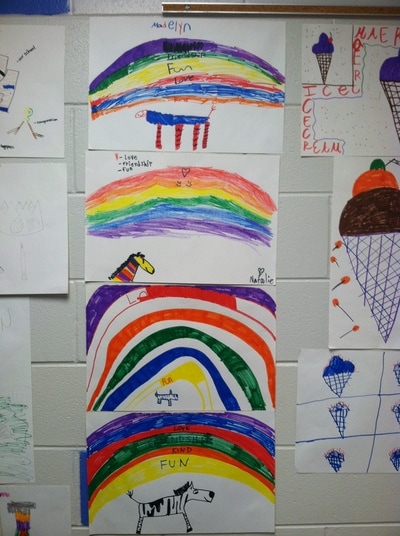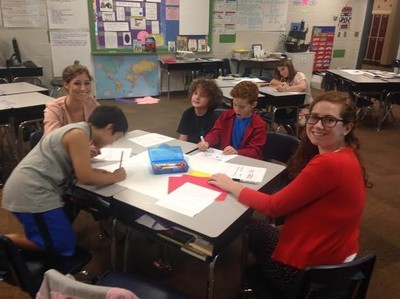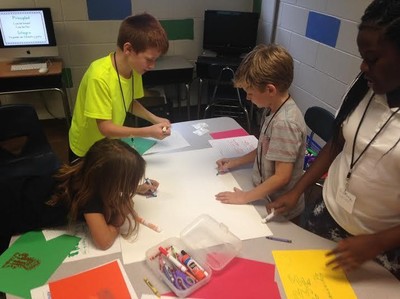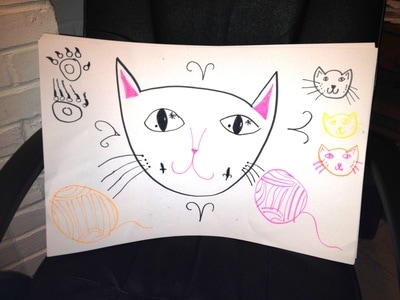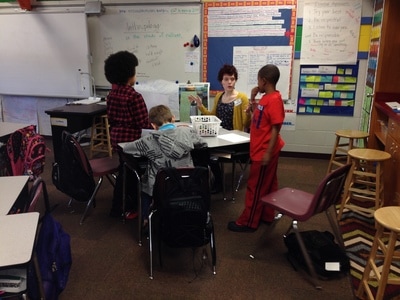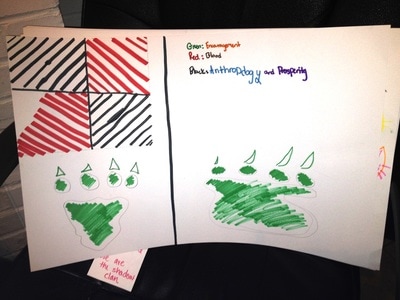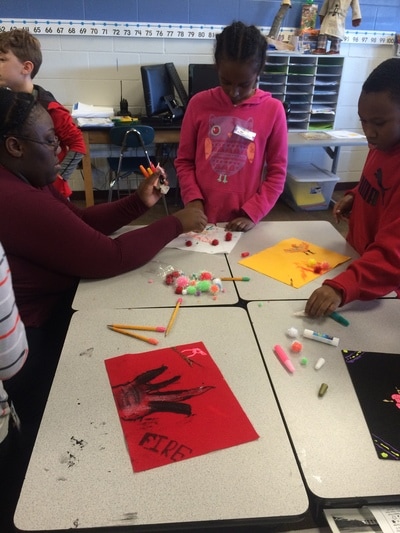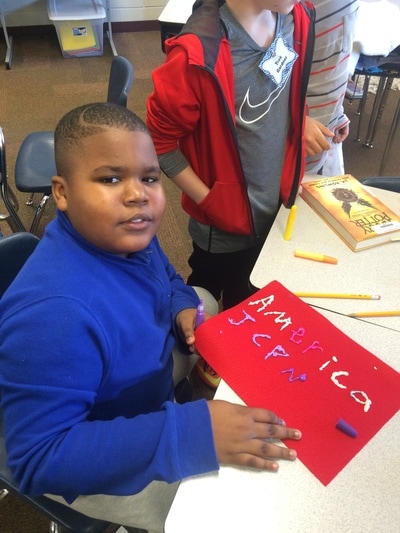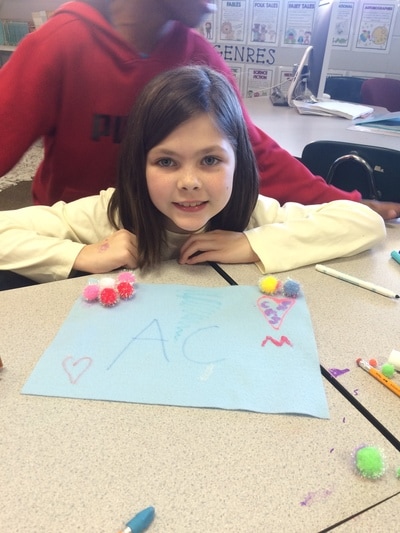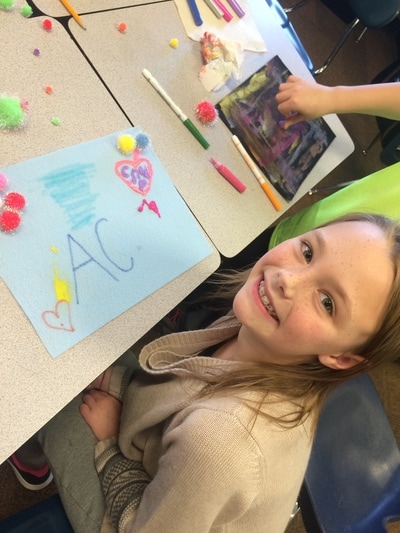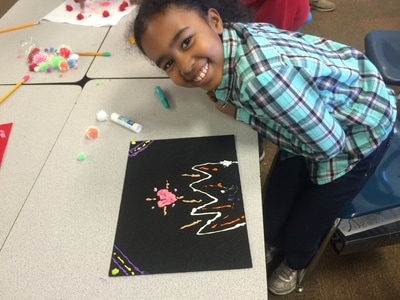Table of Contents
What's this lesson all about?
Our first week always starts with this lesson. We introduce the students to the four sub-fields of anthropology and then delve into culture. Culture is the bread and butter of anthropology. All of the four sub-fields are built around this concept. Starting with a foundation of why culture is important and what exactly that means helps students have a frame of reference for the rest of the class.
Building a Culture
This activity functions as a great introduction for us and the other students! Some semesters we have students from all different grades, so this helps them break the ice with each other and become more comfortable with their new teachers. The Creating a Clan activity is a demonstration of culture in action. They're applying what a culture is and creating one. The students get to create a flag for their clan using markers and poster board. They can put whatever they want on it.
This is always the best part of the year, because all clan names are unique. From American Cheese to the Pink Flamingo Mockingbird Indians, no two clans are ever the same.
Building a Culture
This activity functions as a great introduction for us and the other students! Some semesters we have students from all different grades, so this helps them break the ice with each other and become more comfortable with their new teachers. The Creating a Clan activity is a demonstration of culture in action. They're applying what a culture is and creating one. The students get to create a flag for their clan using markers and poster board. They can put whatever they want on it.
This is always the best part of the year, because all clan names are unique. From American Cheese to the Pink Flamingo Mockingbird Indians, no two clans are ever the same.
Above is a vlog made about our culture lesson and activity from Spring 2018. Our entire powerpoint presentation and lesson notes can be found here (V4)
Creating Culture: Building a Clan Lesson Plan
by Lisa Meister
Third, Fourth, and Fifth Grade
Seven Sessions
Lesson 1: Building a Clan
Materials:
Focus:
Third, Fourth, and Fifth Grade
Seven Sessions
Lesson 1: Building a Clan
Materials:
- Drawing tools: crayons, markers, pencils, colored pencils, erasers
- Poster-board
- Scratch paper
Focus:
- An introduction to anthropology
- What is anthropology?
- What is Culture?
- How is culture shown?
|
Objectives:
|
Kelly Likos leading the "CLAP." CLAP is the acronym we use to represent the four sub-fields of anthropology.
|
- Students this week will understand the four sub-fields of anthropology, and how to define culture.
- cultural anthropology: the study of modern peoples
- linguistic anthropology: the study of language and its effects on culture
- archaeology: study of ancient culture through their material remains
- physical anthropology: the study of human biology and human ancestors.
- Culture: A culture is a shared set of beliefs, behaviors, manners, ways of acting, dressing, eating, and thinking that are common within a group
- Students will create their own culture
Guided Practice:
- Help students answer questions about what their culture is made up of.
Activity:
- Students will create a culture.
- They come up with the name, values, rites of passage, ancestors, and symbols.
- They then take these things and make a clan flag (on the poster board).
Review:
- Anthropology is divided into four sub-fields: cultural anthropology, linguistic anthropology, archaeology, and physical anthropology. Students learned about anthropology and what culture is. They should be able to connect culture with the different aspects of the clan they created.
- What is cultural anthropology?
- What is a rite of passage?
- What did you learn about culture from the clan activity?
Creating Culture: Building a Clan Lesson Plan (v2)
by Madeline Anscombe
Materials:
Focus:
Objectives:
Guided Practice:
Activity:
Review:
Materials:
- Painting tools: Puff paint, pom-poms, glue, googly eyes
- Felt
Focus:
- What is anthropology?
- What is Culture?
- Are there different kinds of Culture?
Objectives:
- Introduce students to CLAP
- CLAP is our acronym that represents the four sub-fields of anthropology
- Students this week will understand the four sub-fields of anthropology, and how to define culture. They will be taught that there are many different kinds of culture, and while there are many kinds each is important.
- archaeology: study of ancient culture through their material remains
- cultural anthropology: the study of modern peoples
- linguistic anthropology: the study of language and its effects on culture
- physical anthropology: the study of human biology and human ancestors.
- Culture: A culture is a shared set of beliefs, behaviors, manners, ways of acting, dressing, eating, and thinking that are common within a group
Guided Practice:
- Help students answer questions about what their culture is made up of.
- Help students compare and understand differences and similarities between their culture and those of their classmates.
Activity:
- Students will create a culture.
- They come up with the name, values, rites of passage, ancestors, and symbols. They will answer questions about the clan and develop its identity.
- They then take these things and make a clan flag (on the felt).
Review:
- Anthropology is divided into four sub-fields: cultural anthropology, linguistic anthropology, archaeology, and physical anthropology. Students learned about anthropology and what culture is. They should be able to connect culture with the different aspects of the clan they created.
- What is cultural anthropology?
- How many cultures exist?
- What did you learn about culture from the clan activity?
Culture, Clans, and Ethnography Lesson Plan
- What is Anthropology?
- The study of the physical and cultural development of human societies past and present
- Sub-Fields:
- Physical Anthropology – study of people from a biological perspective, usually aspects that are genetically inheritable
- Cultural Anthropology – study of human thought, behavior, and lifeways that are learned, rather than inherited, by groups of people.
- Archaeology – study of past cultures, based largely on their remains
- Linguistics – study of language and its relation to culture
- Culture
- What is culture?
- Learned behaviors by which humans adapt to their environment in such a manner that allows them to live in groups. (Ways of life characteristic of a particular human society)
- Symbols: Something that stands for something else.
- Norms: Shared ideas about the way things ought to be done.
- Shaking hands when being introduced to someone new instead rather than bowing
- Hugging as a hello or goodbye rather than kissing cheeks
- Values: Shared ideas about what is true or right
- The idea that breakfast is the most important meal of the day
- The idea that you should tread people how you would want to be treated
- What is culture?
- Ethnography
- What is Ethnography?
- The systematic study of peoples and cultures, it is a means to represent graphically and in writing the culture of a group.
- Anthropological Perspective: Cultural Relativism – cultures should be viewed and analyzed through the lens of their own histories and values, rather than the values of another culture
- What is Ethnography?
- Clans
- What is a clan?
- A group of people brought together and united by an actual or perceived kinship and descent
- Usually a smaller part of a larger society
- What is a clan?
Independent Practice:
Students will be split into groups and form a clan. This activity is intended to demonstrate to the students how culture develops, evolves, and creates diversity among people. Students will be separated into groups of 5* and then be tasked with formalizing their clan. The students will need to come up with a clan name, a clan handshake or dance, and design/pick a clan symbol. After some time, the students will be asked to come to the front of the class and introduce their clan. They will tell us their name, what their symbol is, and demonstrate their handshake to the rest of the class.
*[Specific number subject to change from class discussion]
(If we have a proctor or other teacher who is familiar with the students it may be beneficial to consult with them before splitting into groups to avoid any specific problem pairings, otherwise letting the students choose their own groups, or random selection will suffice)
Activity Supplies:
- Drawing tools: crayons, markers, pencils, colored pencils, erasers
- Poster-board
- Scratch paper
Review:
- What is anthropology?
- What is culture?
- Why is it important to consider cultures from their own perspective?
Downloadable Content
As these lessons are taught through the years, sometimes the activities that go with the lesson get modified. There are multiple versions of the same activity for the Creating Culture lesson. Feel free to use whichever version you prefer, and comment down below with which one you used!
|
|
| ||||||||||||||||||||||||||||||||||||||||||||||||||||||||||||||||||
For more information and our own insider perspective on teaching Culture, check out our blog!
Gallery
This is a picture gallery of clans throughout the years. While other activities have come and go, the Create a Clan activity is an oldie but goodie-the tried and true of our lessons. Take a look through the history of Anthropology is Elemental a la Create a Clan.

